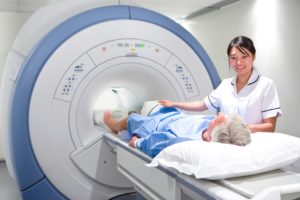
If you were recently injured in a car accident or while playing a sport, you may need to see a doctor for your injury. Part of diagnosing an injury may involve using diagnostic imaging tools like X-Ray and MRI scans. When you visit a Tucker imaging center near you, your doctor may first run an X-Ray to check for a broken bone or joint problem. These types of diagnostic imaging tests are quick and efficient for an initial diagnosis. However, your doctor may want to get a more detailed look at the injured area with an MRI scan for more information. In some cases, an X-ray will be enough to diagnose a broken bone or dislocated joint. Other times, an MRI scan can help provide a clearer image of any damage to muscles, ligaments, tendons, organs, and other soft tissues.
How an X-Ray Works
When you get an X-ray, a special machine will send out a small amount of radiation to the damaged area that needs scanning. When the radiation is emitted, it then passes through your body and produces an image of the bones, joints, and internal organs in the area. Soft tissues like muscles, ligaments, and tendons do not show up on an X-ray because the beams pass right through them. Bones are denser and absorb the radiation which allows them to appear white on the X-ray image, while soft tissues show up as gray or black. X-ray images are in contrasting shades of white, black, and gray and help provide a clearer picture to help with diagnosing injuries or health conditions.
What an X-Ray Is Used For
X-rays are quick and easy to take, which makes them great for emergency purposes. X-rays are commonly used in emergency room and urgent care settings, especially to diagnose or rule out a broken bone, dislocated joint, or another type of bone injury. You don’t have to be injured to get an X-ray. In fact, doctors also order X-rays to provide more detail and information on areas where you may be experiencing pain and discomfort. X-rays can help your doctor to monitor your progress with a health condition or disease like osteoporosis or arthritis.
How an MRI Works
An MRI scan involves a large, round tube-like machine that uses magnetic fields and radio waves to create images of your internal structures. To get an MRI scan, you lie on a table that is inserted into the machine. Giant magnets rotate around your body inside the machine to take these images of your body. Unlike X-rays, MRI scans do not use radiation. MRIs also provide highly detailed images of not just your bones and joints, but also of your muscles, tendons, ligaments, spinal discs, and other soft tissues.
What an MRI Is Used For
MRI scans are also used to diagnose injuries and health conditions. Your doctor may skip an X-ray and request an MRI if they suspect injury or damage to soft tissues that would not show up on an X-ray. For example, MRI scans are used to detect muscle or ligament tears and to identify tumors in the body. MRI scans are also helpful in providing highly detailed images of the brain and structures that support the spinal cord.
Reasons for Scheduling an MRI After an X-Ray
Your doctor may want to schedule an MRI after you have already had an X-ray of the same area. There are several reasons why this might be the case and how it could be beneficial to your overall diagnosis and treatment.
Greater Detail
MRI scans provide much greater detail of an injury or health condition than an X-ray. While X-rays are great for an immediate or emergency situation, it has limitations of what types of internal structures will be shown. An MRI will show how an injury may have damaged bones, joints, organs, and soft tissues in a specific area.
Second Opinion
Your doctor may also want to run an MRI for a second opinion and to further inform the most appropriate diagnosis. An injury that seemed like a simple broken bone may actually have caused some soft tissue damage that needs to be examined further.
Monitor Progress
MRI scans can also be helpful in monitoring your progress through treatment and recovery. The X-ray may have been a good starting point for the diagnosis, but an MRI will help to monitor how your body is healing. There are different kinds of MRIs for injuries to help find accurate problems.
Visit AICA Orthopedics for Tucker imaging services near you to schedule your X-ray, CT scan, MRI, or other diagnostic imaging tests today.
